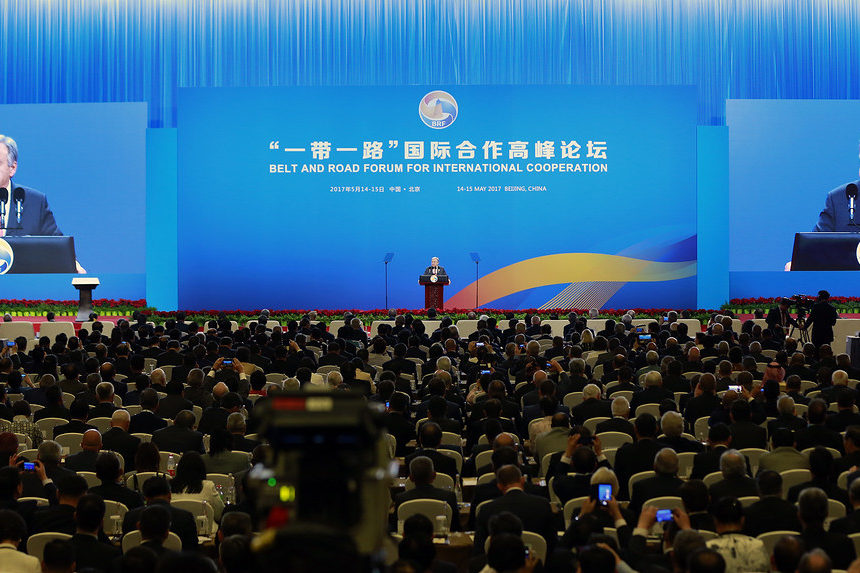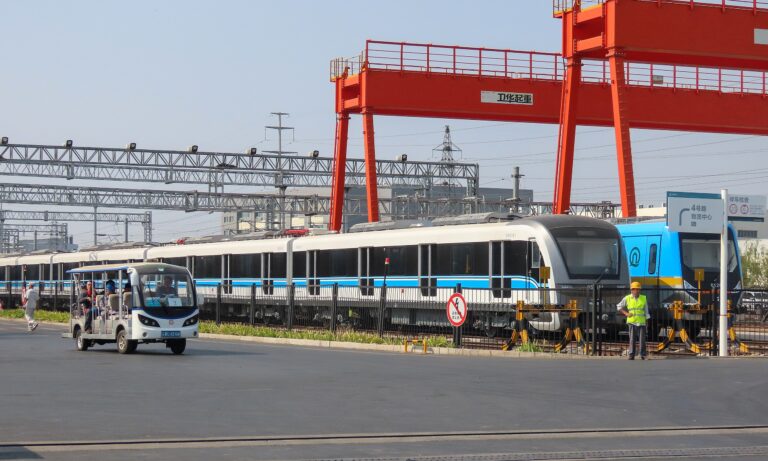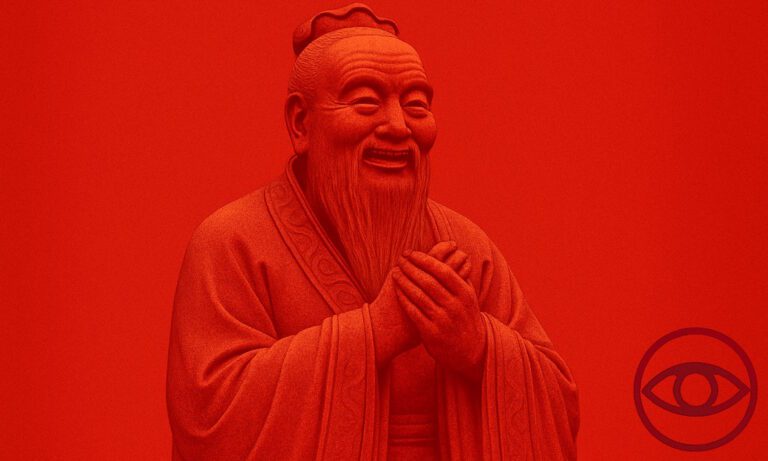
A problem of definition is hampering discussions about China’s Belt and Road Initiative (BRI) to a greater extent than currently appreciated.
Thus far, 148 countries have signed up to the BRI, from Asia to Latin America, diluting any spatial limitations we might attempt to impose. At the same time, BRI policy documents cover every conceivable field of human endeavor, from tourism to nuclear energy.
However, despite the broad and amorphous terms suggested in official communications, much of the Western commentary on the BRI has focused on the initiative’s hard infrastructure component. The DNA of the BRI has been identified as consisting of big-ticket infrastructure projects – bridges, power plants, and railways – built by Chinese companies using hefty loans from Chinese policy banks.
Using this metric alone, we might well conclude that the BRI is on its way out.
In late 2020 the Financial Times headlined an article, utilizing Boston University data, titled “China pulls back from the world.” The bold title was backed by the data that shows a sharp decline in the dollar amount of loans from China Development Bank and the Export-Import Bank of China – the two Chinese policy banks that have provided the majority of BRI-related funding.
Yet, even despite their undeniable financial significance, to equate the BRI solely with policy bank loans is to dismiss other significant dimensions of the initiative. As Stella Hong Zhang writes on the BRI’s hypothetical slowdown, loans are just one metric by which we can measure an initiative that officially includes sectors as diverse as e-commerce and agricultural machinery manufacturing.
If we think of the BRI in terms of trade statistics, greenfield investment, construction contracts, the proliferation of Chinese technological standards, or even if we focus on commercial rather than policy bank loans, we get a different, and often more positive picture of the BRI’s success.
Evolving, not Pulling Back
BRI 1.0 is characterized by a hands-off, commercial, and infrastructure-based approach to global development that is seen to contrast Western development norms.
Western commentary focuses on tied-loan infrastructure because it is financially significant, but also because it is characteristic of China’s distinctive approach to global development. In a very broad-stroke comparison of Western vs Chinese development assistance, the former tends to favor smaller and softer projects: training, municipal improvements, and loans for private enterprises. Members of the Organization for Economic Co-operation and Development (OECD), which represent this Western-led status quo, also tend to eschew tied-aid and commercially motivated development assistance. China, on the other hand, approaches development from a more commercially driven perspective.
Since the BRI was launched in 2013, one of the primary achievements of the initiative has been the growing clout of Chinese enterprises on the world stage. Policy bank loans for BRI infrastructure projects have served as a kind of extraterritorial stimulus for Chinese construction companies, helping them enter foreign markets and become more competitive.
The BRI is primarily about economic clout (and perhaps the geopolitical influence that follows). In so far as there is a development model being exported, it is simply the one that sees infrastructure as crucial for economic development, and in turn for maintaining social and political stability. There are few requirements for what or how the infrastructure should be built, as long as a Chinese company is involved. Meanwhile, development assistance from OECD countries and institutions like the World Bank is more specific about prescribing a development model, and so tends to come with more red tape and preconditions than Chinese assistance.
This laissez-faire lending is often welcomed by governments that feel talked down to by Western counterparts, but where elites are corrupt, self-serving, or simply inept, it can lead to poor-quality outcomes that are bad for both the interests of local people and Beijing’s reputation. In Montenegro for instance, China has financed a one billion dollar highway that fulfilled frustrated national ambitions, but led the country down the path of debt distress.
What Does BRI 2.0 Look Like?
The BRI as we have known it is faced with two main problems: unsustainability related to lack of governance and unacceptable financial risk for the Chinese side.
The BRI’s diminishing portfolio of policy bank loans is largely the result of Beijing exercising greater financial prudence. According to Rhodium Group, a quarter of China’s overseas loans have run into trouble. Although Chinese projects have contributed to debt distress in some host countries, this is not a deliberate play by Beijing. Despite its persistence, the “debt trap” narrative has been widely and thoroughly debunked by experts. It has always been in the interests of Chinese bank executives to get their money back – readily explaining the rationale for the onerous terms of these loan contracts.
Still, despite state guarantees and high-interest rates, Beijing has clearly determined that it no longer has the resources or the appetite for quite so much high-risk lending. On both the host country and Chinese sides, the economic effects of the COVID-19 pandemic have only added to this sense of enhanced caution.
Since late 2018, Beijing has signaled a will to reign in darker impulses of the BRI across the board. During the second Belt and Road Forum in 2019, criticism of the initiative as corrupt, overly bilateral, and opaque was addressed by Xi Jinping, who pledged to pursue “open, green, clean” and “high standard” development. Then, with the 14th Five Year Plan in 2021, Beijing promised “high-quality development” both at home and along the BRI.
However, the phraseology again prompts a definitional question. Namely, the meaning of “high quality” in this context is not an entirely clear concept. Reading between the lines of official pronouncements, “high quality” appears to be aimed at placing greater emphasis on high-tech components, “digital,” “green,” and “health” aspects of the BRI, more scrutiny of investments, and a larger role for private finance, as well as the expansion of governance mechanisms and multilateral initiatives for ensuring the BRI is more “sustainable.”
So far, these promises remain largely on paper. Nonetheless, the BRI is inching forward in the right direction.
Last September, Xi Jinping finally pledged an end to Chinese finance for coal power plants overseas. As of yet, there has been no progress with planned Chinese financing for coal plants, but Chinese contractors have not given up on projects such as the Tuzla B project in Bosnia and Herzegovina. Earlier in 2021, voluntary but important green guidelines hinted at a move towards China’s imposition of international standards across the BRI.
All this means a potential move away from the typical Chinese model of development. In order to ensure sustainability and high quality, Beijing will need to get more involved, by applying more exacting standards to BRI projects and beefing up the capacity of its own institutions to oversee compliance. Ironically, this evolution comes at a time when Western powers are getting more ‘Chinese’ about their approach to connectivity.
For example, Brussels, driven by a sense that the BRI has improved Beijing’s visibility and leveraged economic weight for geopolitical ends, is attempting the same trick through its “Global Gateway” initiative. With better branding and more strategic investments, the EU wants to mirror some of the BRI’s perceived successes.
The BRI is Here to Stay
In terms of the BRI label itself, we are beyond peak BRI. Already new alternative brand labels like Xi’s new, UN-focused “Global Development Initiative,” have emerged. This was hardly unexpected, as the fever-pitch mid-campaign hype circa 2016 was unlikely to be sustainable. However, the BRI has been written explicitly into the Chinese Communist Party (CCP) constitution and therefore it is not likely to disappear entirely. Instead, new meanings will simply be affixed to the overall concept.
Previously, the BRI was something onto which countries unfamiliar with a global China could project their desires and national ambitions. Global China is now no longer as shiny with unrealized potential. Countries know better what Chinese influence means – some have retreated, or succumb to “promise fatigue,” while others have settled into a status-quo of strong relations with Beijing.
With a new “common prosperity” drive underway and the challenge of maintaining a “zero-COVID” policy, China is undoubtedly focusing energies at home. Nonetheless, it is unrealistic to think that Xi Jinping’s ambitious, self-important China is going to curb its pursuit of global power projection.
Economically, China must remain connected. Beijing’s “dual circulation” strategy involves a certain amount of insular self-sufficiency, but these efforts are focused on independence in high-tech bottlenecks and from the West. Ironically, “dual circulation” will actually necessitate a deepening of economic relations with BRI countries, especially in Southeast Asia.
Politically, China will also feel compelled by tensions to, as Beijing puts it, continue telling “China’s story” in the developing world. The launch of competing Western initiatives to the BRI is a challenge that Beijing, with its global leadership ambitions, will not be able to ignore.
Anticipating the BRI’s demise through the narrow understanding of what global China looked like in the past is wishful thinking. While we might not yet have arrived at the era of an open, clean, and green BRI 2.0, we should not underestimate Beijing’s ability to adapt and improve the quality of its offerings to the world. In responding to the BRI, the West has implicitly acknowledged some of the BRI’s merits. Hopefully what follows is a race to the top, offering more compelling global public goods, with both sides improving their approach to global development.
Written by
Jacob Mardell
Jacobmardell1Jacob Mardell is the Editorial Coordinator for the "Spheres of Influence" project. Prior to n-ost, Jacob worked as an analyst at the Mercator Institute of China Studies (MERICS) and as a freelance journalist covering China's Belt and Road Initiative.


